Allergic Reactions in Horses: The Hidden Danger of Dusty or Moldy Bedding Materials
Introduction to Equine Allergies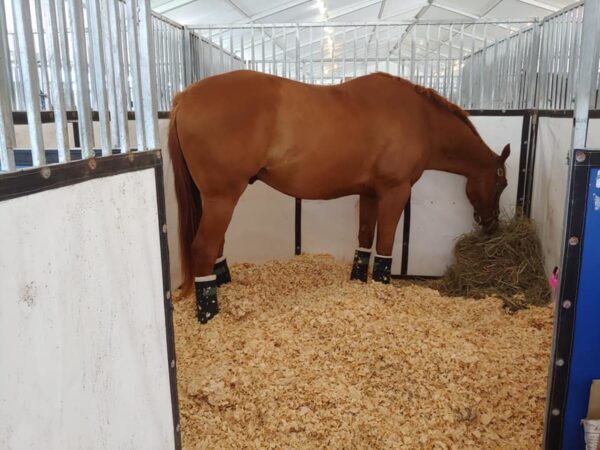
Allergic reactions in horses, ranging from respiratory distress to skin irritations, can severely impact their health, performance, and overall well-being. Environmental allergens, particularly from dusty or moldy bedding materials like straw or poor-quality shavings, are major triggers for conditions such as recurrent airway obstruction (RAO) and contact dermatitis. These allergies lead to discomfort, reduced athletic ability, and costly veterinary treatments. Clean wood pellets and wood shavings, with their low-dust and high-absorbency properties, offer an effective solution to minimize allergen exposure. Drawing on veterinary insights from Advanced Equine of the Hudson Valley, this post delves into the causes and consequences of equine allergies and highlights the role of wood pellets and shavings in prevention.
Watch this: https://www.youtube.com/watch?v=gEtlZ_HFTb8
What Are Equine Allergies?
Horses develop allergic reactions when their immune systems overreact to environmental triggers, such as dust, mold, pollen, or other particulates. These reactions primarily manifest as respiratory issues, like RAO (commonly known as heaves), or skin conditions, such as contact dermatitis and hives. Respiratory allergies cause symptoms like coughing, wheezing, nasal discharge, and labored breathing, while skin allergies result in itching, hair loss, sores, or scabs. According to Advanced Equine, allergies affect up to 15% of stabled horses, with treatment costs ranging from $150-$500 per case, depending on severity and duration.
Common Triggers of Allergic Reactions
Dusty and moldy bedding materials are among the most significant allergy triggers in horses. Dust from straw or low-quality shavings contains fine particles, including pollen, fungal spores, and endotoxins, which irritate the respiratory tract and trigger RAO. Mold, often caused by Aspergillus or Penicillium species in damp bedding, releases mycotoxins that provoke both respiratory and skin reactions. Other triggers include poor stable ventilation, which traps allergens, and prolonged exposure to contaminated bedding, especially in horses stabled for 20-23 hours daily. The veterinary source notes that moldy bedding can increase allergy risk by 30%, particularly in sensitive breeds like Thoroughbreds and Warmbloods.
Respiratory Allergies: Recurrent Airway Obstruction (RAO)
RAO, a chronic condition similar to human asthma, is a leading respiratory allergy in horses. It is triggered by inhaling dust and mold spores from bedding, leading to airway inflammation, mucus buildup, and constricted breathing. Symptoms include chronic coughing, exercise intolerance, and flared nostrils, reducing performance by up to 20% in affected horses. RAO is most common in stabled horses exposed to dusty environments, with prevalence rates as high as 10-20% in poorly managed stables. Long-term exposure to allergens can cause irreversible lung damage, requiring ongoing management with corticosteroids or bronchodilators, costing $200-$600 annually.
Skin Allergies: Contact Dermatitis and Hives
Skin allergies, such as contact dermatitis, occur when horses come into direct contact with moldy or dusty bedding. These reactions cause intense itching, hair loss, scabs, and sores, particularly on the legs, belly, or areas in constant contact with bedding. Hives, characterized by raised welts, can also develop from allergen exposure. Advanced Equine reports that moldy bedding increases the risk of contact dermatitis by 25%, with secondary bacterial infections complicating recovery. Treatment involves topical ointments and antibiotics, with costs averaging $100-$300 per case, and severe cases may lead to prolonged discomfort and reduced usability.
Health and Performance Impacts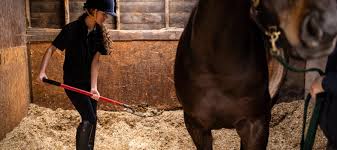
Allergic reactions have significant consequences for horse health and performance. Respiratory allergies like RAO impair oxygen intake, limiting stamina and competitive ability, particularly in racehorses or show jumpers. Skin allergies cause discomfort, leading to behavioral changes like restlessness or scratching, which can damage equipment or facilities. Chronic allergic reactions weaken the immune system, increasing susceptibility to secondary infections like equine influenza, with morbidity rates rising by 15% in affected stables. Owners face financial burdens from veterinary care, reduced performance, and potential loss of horse value, especially in high-value disciplines.
The Role of Dusty and Moldy Bedding
Dusty bedding, such as straw or fine sawdust, releases airborne particles that horses inhale, irritating the lungs and triggering allergic responses. Moldy bedding, caused by improper storage or wet conditions, harbors fungi that release mycotoxins, exacerbating both respiratory and skin allergies. These materials also retain moisture, creating a breeding ground for bacteria and fungi, which worsen stable air quality. The veterinary source highlights that stables with poor bedding management have allergen levels up to 50% higher than those using low-dust, absorbent materials, directly contributing to allergic reactions prevalence.
Why Wood Pellets and Shavings Are Critical
Wood pellets and wood shavings are highly effective bedding solutions for reducing equine allergies. Wood pellets, made from compressed, heat-treated sawdust, are virtually dust-free and absorb up to five times their weight in moisture, preventing mold growth and maintaining a dry stall. Wood shavings, sourced from high-quality, untreated softwoods like pine, offer low-dust cushioning and excellent absorbency, minimizing airborne allergic reactions. Both materials create a hygienic environment that reduces exposure to dust, mold, and bacteria, significantly lowering the risk of RAO and contact dermatitis.
Veterinary Evidence for Wood Pellets and Shavings
Advanced Equine emphasizes that low-dust, absorbent bedding is essential for allergy prevention. Studies show that wood pellets and shavings reduce airborne dust by up to 50% compared to straw, decreasing respiratory irritation. Their heat-treated or high-quality nature eliminates mold spores, reducing allergic reactions exposure by 30%. Stables using wood pellets report a 25% decrease in RAO cases, while shavings lower the incidence of skin allergies by 20%. These materials support stable hygiene, complementing ventilation and cleaning practices to create an allergy-friendly environment.
Key Benefits of Wood Pellets and Wood Shavings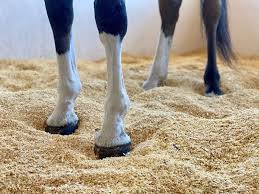
-
Low Dust: Reduces airborne allergic reactions, protecting against respiratory conditions like RAO.
-
High Absorbency: Keeps stalls dry, preventing mold and bacterial growth that trigger allergies.
-
Hygienic Properties: Minimizes pathogens, supporting skin and respiratory health.
-
Comfort: Provides a soft, supportive surface, reducing stress-related immune suppression.
-
Cost-Effective: Durable and efficient, lowering long-term bedding and veterinary costs.
Consequences of Neglecting Proper Bedding
Using dusty or moldy bedding increases allergy risks, leading to chronic health issues and financial losses. RAO can reduce a horse’s competitive lifespan by months, while skin allergies cause discomfort and secondary infections, costing $150-$500 per incident. Poor bedding also worsens stable air quality, increasing veterinary expenses and downtime for performance horses. Owners may face losses in horse value, particularly for show or breeding animals, with poorly managed stables seeing up to 20% higher allergy-related costs.
Practical Tips for Using Wood Pellets and Shavings
To optimize wood pellets and shavings, horse owners should:
-
Source dust-extracted, untreated wood pellets or shavings from trusted suppliers.
-
For pellets, spread a 1-2 inch layer, add water to expand into a 4-6 inch bedding base.
-
For shavings, maintain a 4-6 inch depth for absorbency and comfort.
-
Clean stalls daily, removing soiled bedding and adding fresh material to prevent mold.
-
Ensure 6-8 air changes per hour through ventilation to enhance low-dust benefits.
Complementary Strategies for Allergy Prevention
Beyond wood pellets and shavings, these practices help manage equine allergies:
-
Ventilation: Maintain 6-8 air changes per hour to reduce dust and allergic reactions buildup.
-
Grooming: Regularly brush horses to remove dust and allergens from their coat.
-
Veterinary Care: Consult a veterinarian for allergy testing and treatments like antihistamines.
-
Turnout: Increase outdoor time to minimize exposure to stable allergens.
-
Nutrition: Supplement diets with omega-3 fatty acids to reduce inflammation and support immunity.
Economic and Welfare Impacts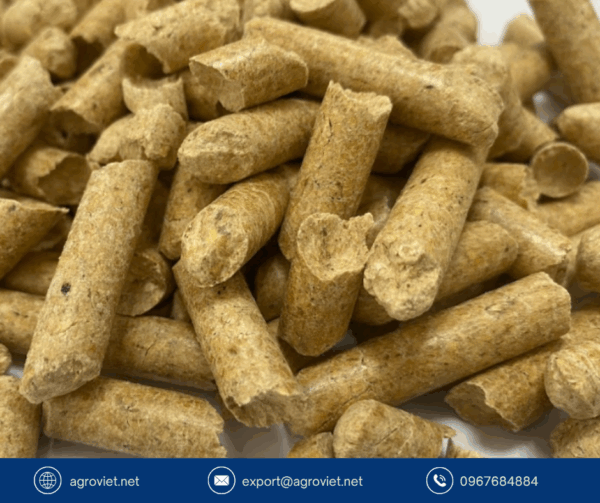
Wood pellets and shavings improve horse welfare by reducing allergic reactions, ensuring better respiratory and skin health. Healthy horses maintain performance, saving owners $150-$500 annually in veterinary costs. Their durability reduces bedding replacement frequency, lowering long-term expenses. Biodegradable and sustainable, these materials align with environmentally conscious stable management, meeting consumer demand for ethical equine care and enhancing stable profitability.
Addressing Challenges with Wood Pellets and Shavings
Challenges include the initial setup time for wood pellets and sourcing high-quality, dust-free materials. Wetting pellets to expand them requires planning, but their longevity offsets this effort. Low-grade shavings may contain dust, so selecting premium products is essential. Store bedding in dry conditions to prevent mold, and regularly turn shavings to maintain absorbency. With proper management, these materials significantly reduce allergic reactions risks and support equine health.
Conclusion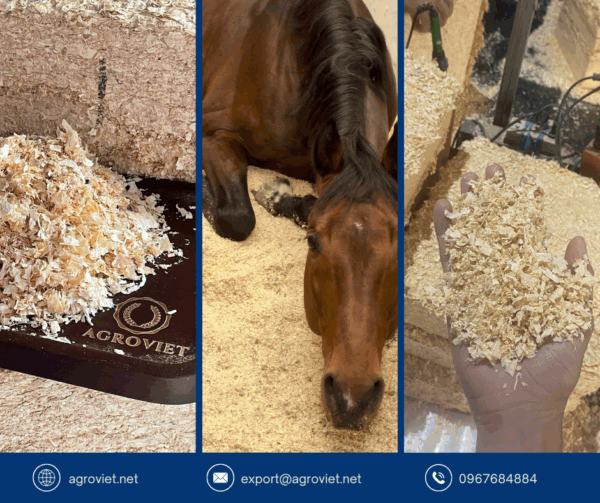
Dusty and moldy bedding materials pose a serious threat to horses, triggering allergic reactions that compromise respiratory and skin health. Wood pellets and shavings, with their low-dust, high-absorbency properties, are proven solutions to minimize allergic reactions and maintain a healthy stable environment. Supported by veterinary insights from Advanced Equine, these bedding materials reduce the risk of RAO, contact dermatitis, and related conditions, enhancing horse welfare and performance. By prioritizing wood pellets and shavings alongside robust stable management, horse owners can prevent allergies, reduce costs, and ensure sustainable, healthy stable operations.
Read more: https://vietnambestwood.com/general/hock-sores-and-pressure-ulcers/
